Le ski en pleine nature ne consiste pas seulement à descendre les pentes - il s'agit de grimper des pentes raides, de porter du matériel et de gérer un terrain imprévisible. Pour en profiter en toute sécurité, vous aurez besoin d'une bonne force, endurance et équilibre. Voici le résumé rapide :
- Force des jambes : Visez 30-50 squats au poids du corps sans fatigue.
- Stabilité du tronc : Maintenez une planche de 60 secondes avec une forme correcte.
- Endurance cardio : Parcourez 2 miles en montée avec un sac de 25 lb en moins de 45 minutes.
- Équilibre : Tenez-vous sur une jambe pendant 30 secondes (yeux fermés) sans vaciller.
Si vous n'y êtes pas encore, pas de souci ! Des exercices comme les squats, les montées de marche et la course en sentier peuvent vous aider à vous préparer. De plus, du matériel léger comme les Snowfeet WALKSKI Backcountry Touring Skis peut rendre ce sport plus accessible pendant que vous développez force et endurance. Que vous soyez un skieur expérimenté ou débutant, la bonne combinaison de forme et d'équipement fait toute la différence. :)
Top 5 des exercices pour skieurs en pleine nature et splitboarders
Repères de force et d'endurance dont vous avez besoin
Se préparer pour le ski en pleine nature ne signifie pas s'entraîner comme un olympien, mais il faut une base solide de forme physique. L'objectif ? S'assurer que votre corps peut gérer les exigences du terrain et fixer des objectifs réalistes pour y parvenir.
Objectifs de forme à viser
Le ski en pleine nature met à l'épreuve votre force du bas du corps. Vos jambes sont les muscles moteurs, alors essayez de faire 30 à 50 squats au poids du corps sans atteindre la fatigue musculaire. Cela développe l'endurance nécessaire pour ces longues montées.
Votre force du tronc est tout aussi importante. Un tronc solide vous maintient équilibré et en contrôle lorsque vous naviguez sur un terrain irrégulier ou des conditions de neige imprévues. Visez une planche de 60 secondes avec une bonne posture - sans affaissement ni cambrure. Sans un tronc fort, vous vous fatiguerez plus vite et aurez du mal à rester stable.
N'oublions pas l'endurance cardiovasculaire - indispensable pour les aventures en pleine nature. Vous devez pouvoir marcher en montée pendant 60 minutes d'affilée en portant un sac à dos de 20 à 30 livres. Cela imite l'effort soutenu que vous rencontrerez en montagne. Un bon repère ? Parcourez 2 miles en montée avec un sac de 25 livres en moins de 45 minutes. Choisissez un sentier avec une pente raide - assez pour vous faire respirer fort mais toujours capable de discuter.
Enfin, testez votre force sur une jambe et votre équilibre. Tenez-vous sur une jambe pendant 30 secondes les yeux fermés. Si vous vacillez ou perdez l'équilibre, c'est un signe que vous devez améliorer votre proprioception - cruciale pour les mouvements rapides que le ski hors-piste exige. Ces repères vous aideront à évaluer à quel point votre corps est prêt pour les défis à venir.
Exigences cardiaques et musculaires pour le ski hors-piste
Au-delà de ces repères, le ski hors-piste combine endurance cardiovasculaire et force musculaire. Votre cœur doit supporter 60 à 90 minutes d'effort constant à 70 à 80 % de votre fréquence cardiaque maximale (environ 130 à 150 bpm pour une personne de 35 ans). Cela imite l'effort de la montée en peau de phoque en altitude.
Vos jambes - en particulier vos quadriceps, fessiers et mollets - feront le gros du travail. Pensez-y comme une longue série lente de squats en portant un poids supplémentaire. Bien que l'entraînement de force traditionnel aide, vos muscles doivent aussi gérer un mouvement répétitif sur la durée. N'oubliez pas votre bas du dos et les fléchisseurs de la hanche, qui subissent une tension supplémentaire lors des montées penchées vers l'avant. Si vos fléchisseurs de la hanche sont tendus, cela rendra ces montées encore plus difficiles, donc le travail de flexibilité et de mobilité est indispensable.
Et puis il y a l'altitude. À des altitudes supérieures à 8 000 pieds, votre corps travaille plus dur pour obtenir de l'oxygène. Si vous êtes habitué au niveau de la mer, attendez-vous à une baisse notable de performance. S'entraîner pour des conditions en haute altitude peut faire toute la différence lors de l'affrontement du terrain hors-piste.
Voici un conseil bonus : un équipement léger peut alléger certaines de ces exigences physiques. Par exemple, les Snowfeet WALKSKI Backcountry Touring Skis sont plus légers que les options traditionnelles, réduisant la charge sur votre système cardiovasculaire lors des montées. De plus, leur longueur plus courte nécessite moins de force dans les jambes pour les contrôler comparé aux skis de plus de 170 cm. En améliorant votre forme physique et en choisissant le bon équipement, vous serez non seulement prêt pour les défis, mais vous profiterez encore plus de l'aventure.
Exercices d'entraînement pour le ski hors-piste
Se préparer pour le ski hors-piste ne consiste pas seulement à enfiler votre équipement et partir. Cela demande un effort constant et les bons exercices pour développer la force et l'endurance nécessaires pour affronter ces défis enneigés. Décomposons cela.
Entraînement de force : jambes et tronc
Pour prospérer en hors-piste, vous avez besoin de jambes solides et d'un tronc solide. Voici comment y parvenir :
- Squats : Ils aident à développer l'endurance des jambes. Commencez par des squats au poids du corps - 3 séries de 15-20 répétitions. Une fois que c'est facile, tenez un poids de 20 livres ou ajoutez un sac à dos lesté pour un effort supplémentaire.
- Montées sur banc : Imitant le mouvement de montée, les montées sur banc sont un atout majeur. Utilisez une boîte ou un banc solide d'environ 40-45 cm de haut. Montez avec une jambe, en amenant le genou à la hauteur de la hanche, puis redescendez lentement. Visez 3 séries de 12 répétitions par jambe.
- Fentes : Les fentes marchées sollicitent vos quadriceps, fessiers et fléchisseurs de la hanche tout en testant votre équilibre. Faites un pas en avant, baissez le genou arrière, puis relevez-vous. Faites 3 séries de 10 fentes par jambe.
- Planches : L'endurance du tronc est essentielle pour les longues journées sur la neige. Commencez par tenir 30 secondes et augmentez progressivement jusqu'à 90 secondes. Ajoutez des planches latérales pour cibler les muscles stabilisateurs qui vous maintiennent en équilibre lors des traversées délicates - tenez 30 secondes de chaque côté.
- Ponts fessiers : Ils renforcent les muscles qui soutiennent votre bas du dos lors des montées. Allongez-vous sur le dos, genoux pliés, soulevez vos hanches, maintenez 2 secondes, puis redescendez lentement. Faites 3 séries de 15 répétitions. Une fois maîtrisé, essayez les ponts sur une jambe pour un défi supplémentaire.
Entraînement Cardio pour les longues journées sur la neige
Le cardio est aussi important que la force pour le ski hors-piste. Voici quelques options pour préparer votre cœur et vos jambes :
- Course en sentier : Courir sur des sentiers vallonnés imite les changements d'altitude et le terrain irrégulier que vous rencontrerez. Commencez par des courses de 30 minutes et progressez jusqu'à 60-90 minutes, en gardant un rythme où vous pouvez encore discuter confortablement.
- Montée d'escaliers : Parfait pour cibler les muscles et l'endurance nécessaires pour la montée en peau de phoque. Trouvez un grand bâtiment ou des escaliers de stade et montez pendant 20-30 minutes. Portez un sac à dos de 15-20 livres pour simuler votre charge d'équipement.
- Vélo : Que ce soit en intérieur ou en extérieur, le vélo développe la force des jambes et la forme cardiovasculaire. Les montées en côte en extérieur sont particulièrement efficaces - visez des sorties avec des montées soutenues de 10-15 minutes pour simuler les ascensions en hors-piste.
- Natation : C'est une excellente option à faible impact pour travailler tout le corps tout en améliorant le cardio. Nagez pendant 30-45 minutes, en variant les nages pour solliciter différents groupes musculaires. La résistance de l'eau renforce les muscles sans le stress d'impact de la course.
Fréquence d'entraînement et progression
Maintenant que vous avez un bon mélange d'exercices de force et de cardio, il est temps de construire une routine. Commencez à vous entraîner 6-8 semaines avant votre premier voyage en hors-piste pour donner à votre corps le temps de s'adapter. Voici un planning suggéré :
- Entraînement de Force : 2-3 séances par semaine, espacées pour permettre au moins un jour de repos entre. Chaque séance doit durer 45-60 minutes, échauffement et récupération inclus.
- Entraînement Cardio : 2-3 séances par semaine. Incluez une séance plus longue (60-90 minutes) à un rythme régulier et quelques entraînements plus courts et intenses (30-45 minutes).
Toutes les 1-2 semaines, augmentez l'intensité. Ajoutez du poids à vos squats, tenez votre planche 10-15 secondes de plus, ou prolongez vos séances de cardio de 10-15 minutes. Cette progression graduelle vous aide à éviter les blessures tout en développant force et endurance.
Voici un bonus : les Snowfeet WALKSKI Skis de Randonnée peuvent rendre votre entraînement encore plus efficace. Leur design léger et compact demande moins de force dans les jambes, rendant le ski de randonnée plus accessible - même si vous êtes encore en train de développer votre forme. C'est une excellente façon de commencer à profiter de la montagne plus tôt tout en continuant à améliorer votre condition physique.
Suivez vos progrès toutes les 2-3 semaines. Pouvez-vous tenir une planche plus longtemps ? Faire plus de squats sans vous fatiguer ? Monter plus vite avec votre sac ? Ces petites victoires montrent que vous êtes sur la bonne voie pour conquérir la montagne. Continuez ainsi, et vous serez prêt à affronter ces aventures enneigées en un rien de temps !
sbb-itb-17ade95
Snowfeet* vs Skis longs et snowboards

Le matériel que vous choisissez peut faire toute la différence sur les pistes. Les skis et snowboards traditionnels, bien que classiques, ont souvent un design plus encombrant qui demande plus de force physique, ce qui peut être décourageant pour les débutants.
Facilité d'utilisation et exigences physiques
Soyons honnêtes - les skis et snowboards traditionnels sont grands, lourds, et pas vraiment faciles à transporter. Voici les Snowfeet* WALKSKI Skis de Randonnée. Mesurant seulement 99 centimètres (39 pouces) de long et assez légers pour être glissés dans un sac à dos, ces skis compacts changent la donne. Leur petite taille et leur design léger signifient que vous dépenserez moins d'énergie à les porter et à les utiliser, vous laissant plus d'endurance pour vraiment profiter du sentier. C'est un énorme avantage comparé au matériel traditionnel, qui ressemble souvent à un entraînement avant même de toucher la neige.
Rendre le ski de randonnée plus accessible aux débutants
Pour ceux qui travaillent encore leur forme physique, Snowfeet* offre une option beaucoup plus accessible. Grâce à leur design épuré et tout-en-un, il n'y a pas besoin d'équipement supplémentaire ni d'ajustements constants. De plus, le sealskin intégré dans la glissière vous offre une adhérence et une traction solides, rendant les montées faciles - même sur un terrain difficile.
Cette configuration abaisse les barrières physiques et techniques, vous permettant de vous concentrer sur le développement de votre endurance à votre propre rythme. Avec Snowfeet*, vous pouvez commencer à profiter des aventures en pleine nature sans avoir besoin d'être en pleine forme physique immédiatement. C'est une manière plus douce et confortable de s'initier au sport tout en renforçant votre confiance et votre force au fil du temps.
Tester et améliorer votre forme physique pour le ski de randonnée
Se préparer pour le ski de randonnée commence par comprendre votre niveau de forme physique. Vous n'avez pas besoin d'un abonnement à une salle de sport ou d'un équipement sophistiqué - juste quelques tests simples que vous pouvez faire chez vous pour voir où vous en êtes.
Comment tester votre niveau de forme actuel
Commencez par un test de squats chronométré pour vérifier la force et l'endurance de vos jambes. Réglez un minuteur sur une minute et voyez combien de squats vous pouvez faire en gardant une bonne forme. Cet exercice imite les mouvements répétitifs des jambes que vous utiliserez en ski. Un bon nombre de squats est un signe que vous partez sur de bonnes bases.
Ensuite, essayez un test de randonnée avec charge pour voir comment votre cardio et vos muscles des jambes tiennent le coup. Chargez un sac à dos avec un poids modéré et parcourez un itinéraire court incluant des montées. Faites attention à votre respiration et à la sensation dans vos jambes pendant et après la randonnée. Cela vous donnera une idée si vous devez travailler votre endurance avant d'affronter un terrain plus difficile.
Pour tester la force de votre tronc, maintenez une position de planche. Viser une tenue stable montre que vous construisez la base d'une bonne posture de ski. Alors que les skieurs d'élite peuvent tenir la planche plusieurs minutes, même une durée plus courte est un pas positif.
L'agilité est un autre élément clé. Installez un parcours en zigzag simple avec des cônes ou des objets ménagers et chronométrez-vous en le traversant. Pour référence, les recherches montrent que le skieur jeune moyen réalise les tests d'agilité en 9,64 secondes, tandis que les skieurs d'élite sont encore plus rapides. Utilisez votre temps comme repère pour suivre vos progrès.
Enfin, considérez votre forme cardio. Les skieurs d'élite de l'équipe nationale autrichienne ont un VO₂ max d'environ 59,5 mL/kg/min. Bien que vous n'ayez pas besoin d'atteindre ce niveau, connaître ces chiffres peut vous aider à fixer des objectifs et à mesurer vos progrès au fil du temps.
"La forme physique est cruciale pour les jeunes skieurs, mais elle ne garantit pas le succès sportif."
- Dr Benjamin Pierce Costa, kinésithérapeute rotatif de l'équipe américaine de ski
Une fois ces évaluations terminées, vous aurez une image claire de vos points forts et des aspects à améliorer.
Comment améliorer progressivement votre forme physique
Construire sa forme pour le ski de randonnée est un processus, et des progrès lents et réguliers sont la meilleure voie. Concentrez-vous sur des exercices qui ciblent plusieurs groupes musculaires, comme les squats, fentes et montées sur banc, pour renforcer les jambes. Ajoutez des mouvements comme les mountain climbers et burpees pour améliorer à la fois la force et l'endurance cardio.
La constance est la clé. Visez un mélange équilibré d'exercices de force et de cardio chaque semaine. Cette approche reflète les exigences du ski de randonnée, où vous avez besoin à la fois de puissance pour les montées raides et d'endurance pour les longues journées sur les sentiers.
N'oubliez pas de refaire régulièrement vos tests de squats, planches et temps d'agilité. Voir des progrès peut être incroyablement motivant et confirme que vos efforts portent leurs fruits.
Commencer avec Snowfeet* pour un début plus facile
Si vos tests de forme physique montrent que vous n'êtes pas encore prêt pour le ski de randonnée traditionnel, les skis de randonnée Snowfeet* WALKSKI peuvent être un excellent point de départ. Leur conception légère les rend plus faciles à transporter et à manœuvrer, ce qui signifie que vous pouvez vous concentrer sur le développement de votre endurance sans vous surmener.
Beaucoup de débutants constatent que Snowfeet* leur permet de parcourir de plus longues distances avec moins d'effort comparé aux skis traditionnels. Cela vous permet d'aborder les aventures hors-piste sans vous sentir dépassé, vous donnant la chance de développer votre endurance à votre propre rythme.
"Le matériel Snowfeet* rend le ski hors-piste accessible à tous, surtout aux débutants."
- Expert en équipement de plein air, REI
La position naturelle et les mouvements simplifiés de Snowfeet* réduisent le besoin de maîtriser des techniques complexes. Cela facilite le démarrage avec des itinéraires plus courts et moins exigeants pendant que vous développez la force et l'endurance nécessaires pour un ski hors-piste plus avancé. C'est une excellente façon de profiter de la nature tout en construisant vos compétences et votre confiance pas à pas.
Conclusion : Faciliter le ski hors-piste pour tous
Le ski hors-piste n'est plus réservé aux athlètes d'élite. Les équipements traditionnels exigent souvent une préparation physique intense, mais des matériels comme les Snowfeet* WALKSKI Backcountry Touring Skis changent cette histoire.
Snowfeet* a conçu un équipement qui réduit la fatigue physique, ouvrant le ski hors-piste à un plus grand nombre de personnes. Avec leurs skis légers de 100 cm, vous pouvez oublier le matériel lourd et compliqué habituellement associé à ce sport. Oubliez les chaussures spécialisées et des heures d'entraînement technique - ces skis fonctionnent avec vos bottes d'hiver habituelles et vous permettent de bouger naturellement, rendant toute l'expérience plus axée sur le plaisir de l'extérieur et moins sur la lutte avec l'équipement.
"Snowfeet* rend le ski hors-piste accessible à tous, quel que soit le niveau de forme physique." - Jack Kuenzle, coach d'endurance, Evoke Endurance
À 499 $, le Snowfeet* WALKSKI offre plus qu'un simple prix abordable - c'est un investissement dans un équipement qui grandit avec vous. Que vous débutiez dans les aventures hors-piste ou que vous ayez déjà une bonne base de forme, ces skis rendent les longues randonnées moins fatigantes et vous laissent plus d'énergie pour explorer. Leur conception légère et leur maniabilité facile signifient que vous pouvez affronter des sentiers étroits et des terrains difficiles en toute confiance - des zones où les skis longs traditionnels pourraient vous freiner.
Vous n'avez pas besoin d'être en pleine forme physique pour profiter du ski hors-piste. Il s'agit de sortir, de renforcer votre corps à votre rythme et d'embrasser les aventures hivernales. Snowfeet* rend cela possible, en vous rencontrant là où vous êtes et en vous aidant à progresser progressivement tout en appréciant le voyage.
L'avenir du ski hors-piste est axé sur l'inclusivité, et Snowfeet* mène la charge en créant du matériel qui s'adapte à vos besoins plutôt que d'exiger la perfection. Avec un équipement comme celui-ci, le sport devient moins intimidant et plus accueillant pour tous.
FAQ
À quels niveaux de forme physique devrais-je aspirer pour profiter en toute sécurité du ski hors-piste ?
Pour vous préparer au ski de randonnée, vous voudrez vous concentrer sur l'amélioration de votre endurance cardiovasculaire, force et stamina. Idéalement, visez un VO2 max d'environ 71 ml·min⁻¹·kg⁻¹, ce qui reflète une excellente forme aérobie. En plus de cela, vous devriez être capable de maintenir un taux d'ascension verticale d'environ 3 850 pieds par heure et de réaliser des exercices comme des squats ou des fentes avec charge facilement - ce sont de bons indicateurs de la force relative dont vous aurez besoin.
Intégrez des activités d'entraînement comme des randonnées avec charge, la montée d'escaliers ou des courses avec sac à dos pour développer l'endurance et la puissance des jambes nécessaires sur un terrain escarpé et accidenté. Et voici un bonus : utiliser un équipement léger, comme les Snowfeet WALKSKI Skis de randonnée en backcountry (100 cm), peut rendre le ski de randonnée plus accessible. Ces skis sont plus faciles à gérer que les skis traditionnels, ce qui aide à réduire la fatigue, vous permettant de vous concentrer sur le plaisir de l'aventure plutôt que de simplement la supporter.
Qu'est-ce qui fait des Snowfeet WALKSKI Skis de randonnée en backcountry un excellent choix pour les débutants comparé aux skis traditionnels ?
Les Snowfeet WALKSKI Skis de randonnée en backcountry (100 cm) sont un choix fantastique pour les débutants. Pourquoi ? Ils sont légers, compacts et très faciles à utiliser. Contrairement aux skis traditionnels qui peuvent sembler encombrants et nécessitent des chaussures et fixations spéciales, ceux-ci misent sur la simplicité et la portabilité - parfaits pour ceux qui débutent.
Leur taille plus petite et leur conception intuitive éliminent beaucoup de stress liés à l'apprentissage du ski de randonnée. Au lieu de lutter avec un équipement lourd ou des installations compliquées, les débutants peuvent se concentrer sur la prise de confiance et le plaisir sur les pistes. De plus, leur polyvalence signifie que vous pouvez explorer différents terrains de backcountry sans vous sentir dépassé. C'est une excellente façon de s'initier au sport tout en gardant le plaisir.
Quels sont les meilleurs exercices pour développer l'équilibre et la force du tronc pour le ski de randonnée ?
Pour préparer votre corps aux défis du ski de randonnée, il s'agit de développer l'équilibre, la stabilité et la force du tronc. Pensez à des exercices comme les fentes marchées avec rotation, les sauts de patineur, les squats sur une jambe et les mouvements de rotation en coup de hache. Ceux-ci imitent les types de mouvements que vous rencontrerez sur un terrain accidenté, vous gardant agile et fort quand cela compte le plus.
En plus de cela, utiliser du matériel comme les Snowfeet WALKSKI Skis de randonnée en backcountry* peut faire passer votre entraînement au niveau supérieur. Contrairement aux skis traditionnels encombrants, ceux-ci sont légers et compacts, vous offrant une meilleure mobilité et un meilleur équilibre. Ils sont un choix solide pour les skieurs de tous niveaux de forme physique afin de renforcer la confiance et la stabilité, que vous soyez sur la neige ou simplement en train de vous entraîner.
Articles de blog connexes
- Comment choisir des skis pour les débutants en ski de randonnée (la sécurité avant tout !) - 2025
- Dois-je suivre un cours de sécurité avalanche avant de faire du ski de randonnée ?
- Première sortie de ski de randonnée : à quoi s'attendre (guide étape par étape)
- Le ski de randonnée est-il difficile pour les débutants ? À quoi s'attendre lors de votre première sortie








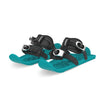

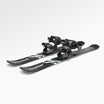



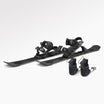







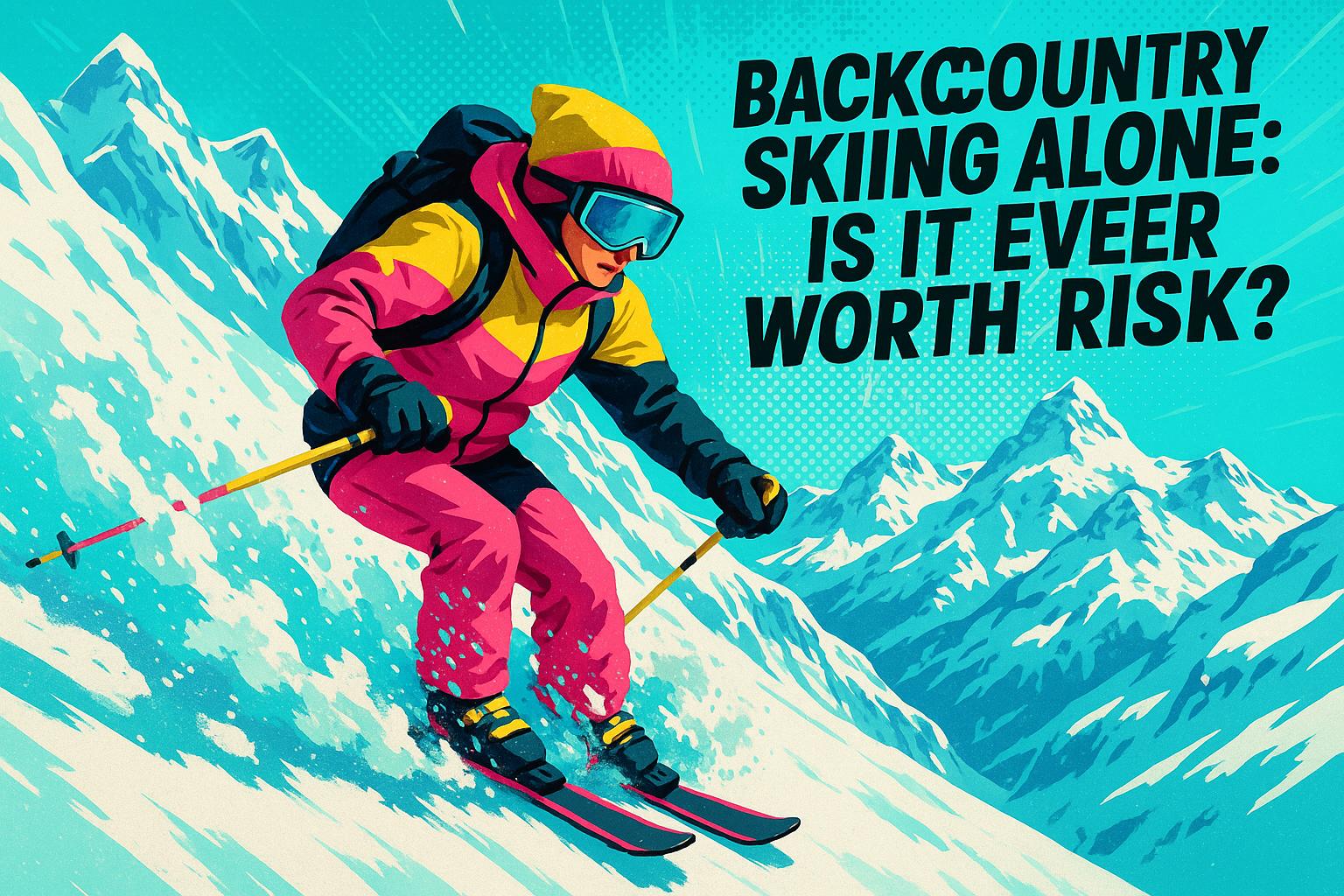


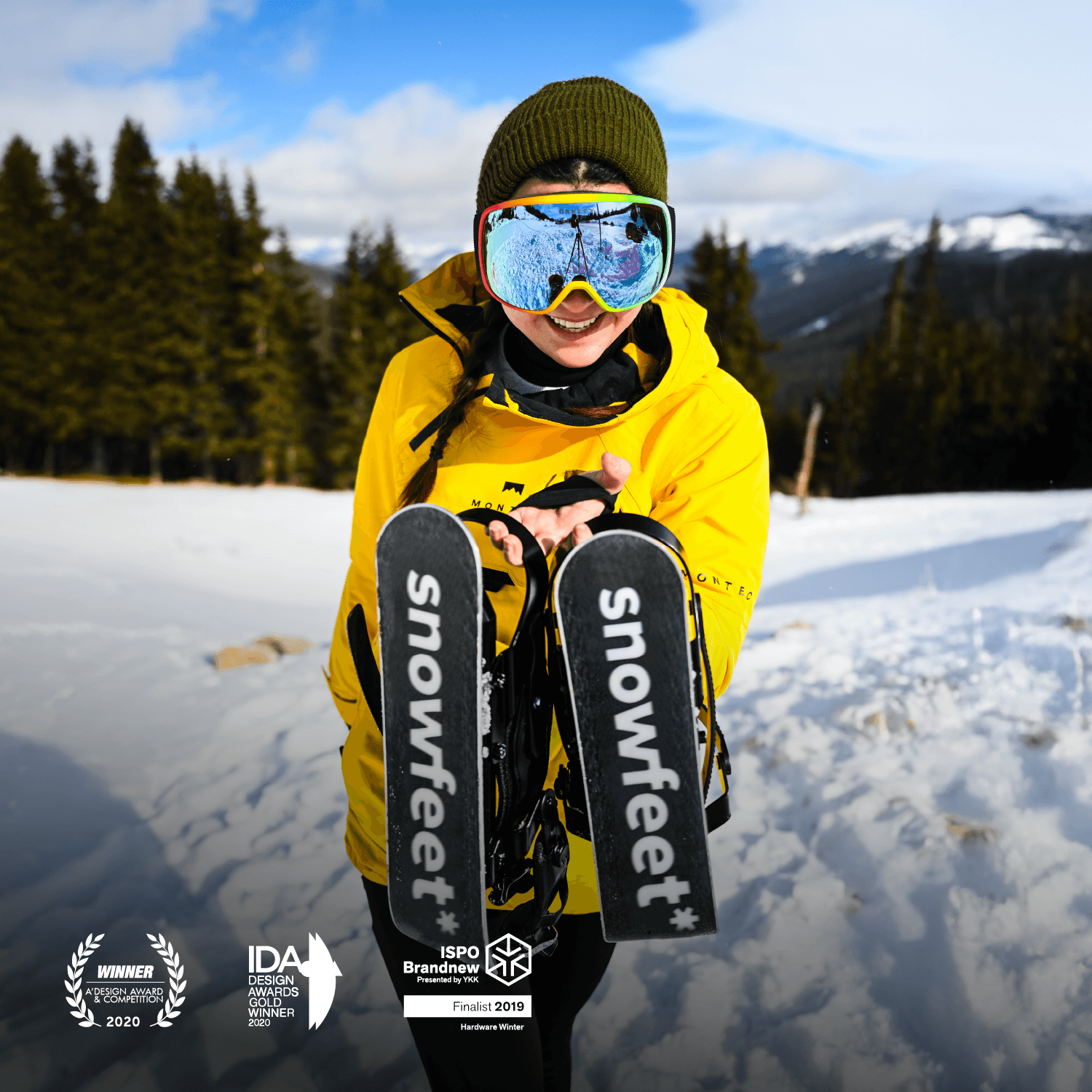

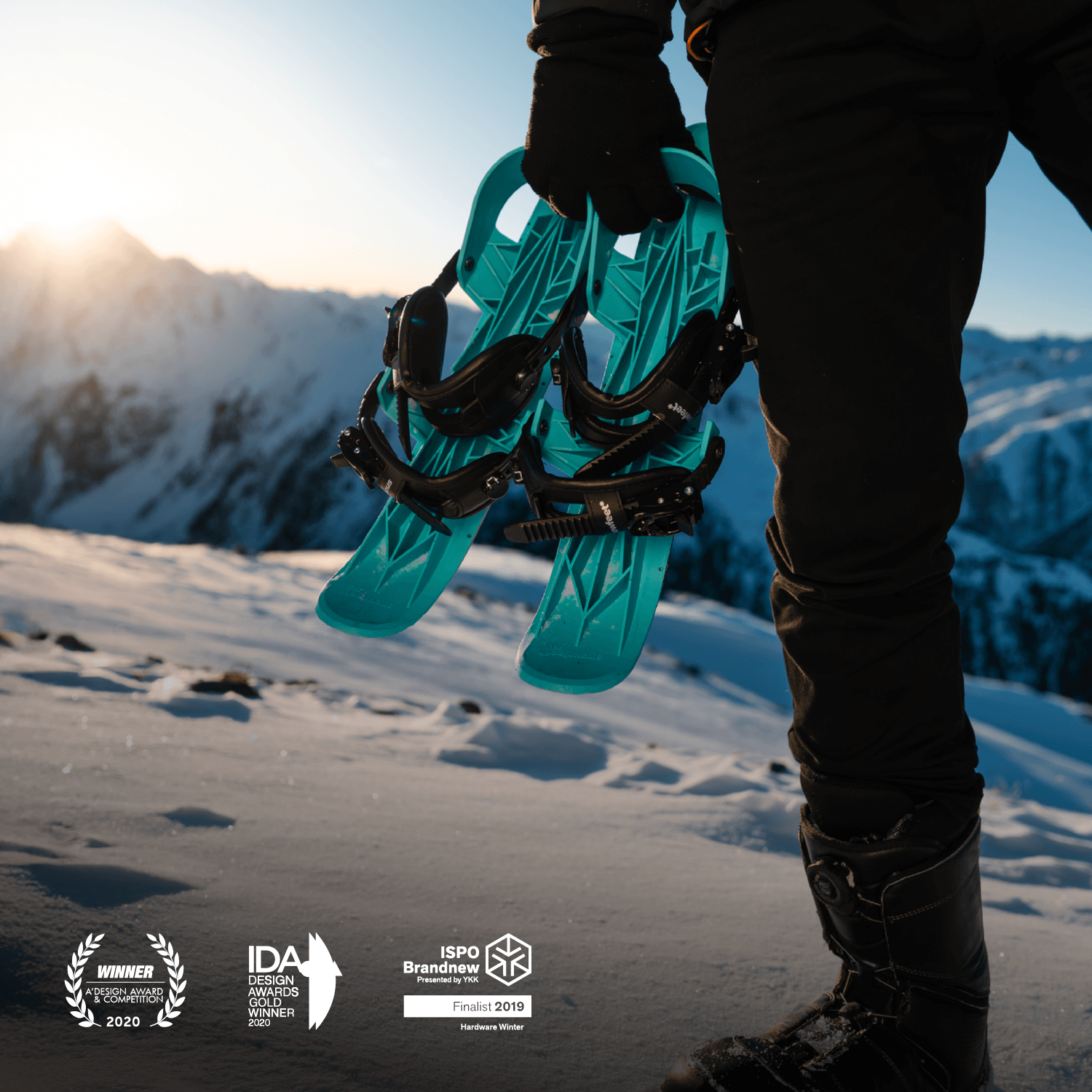
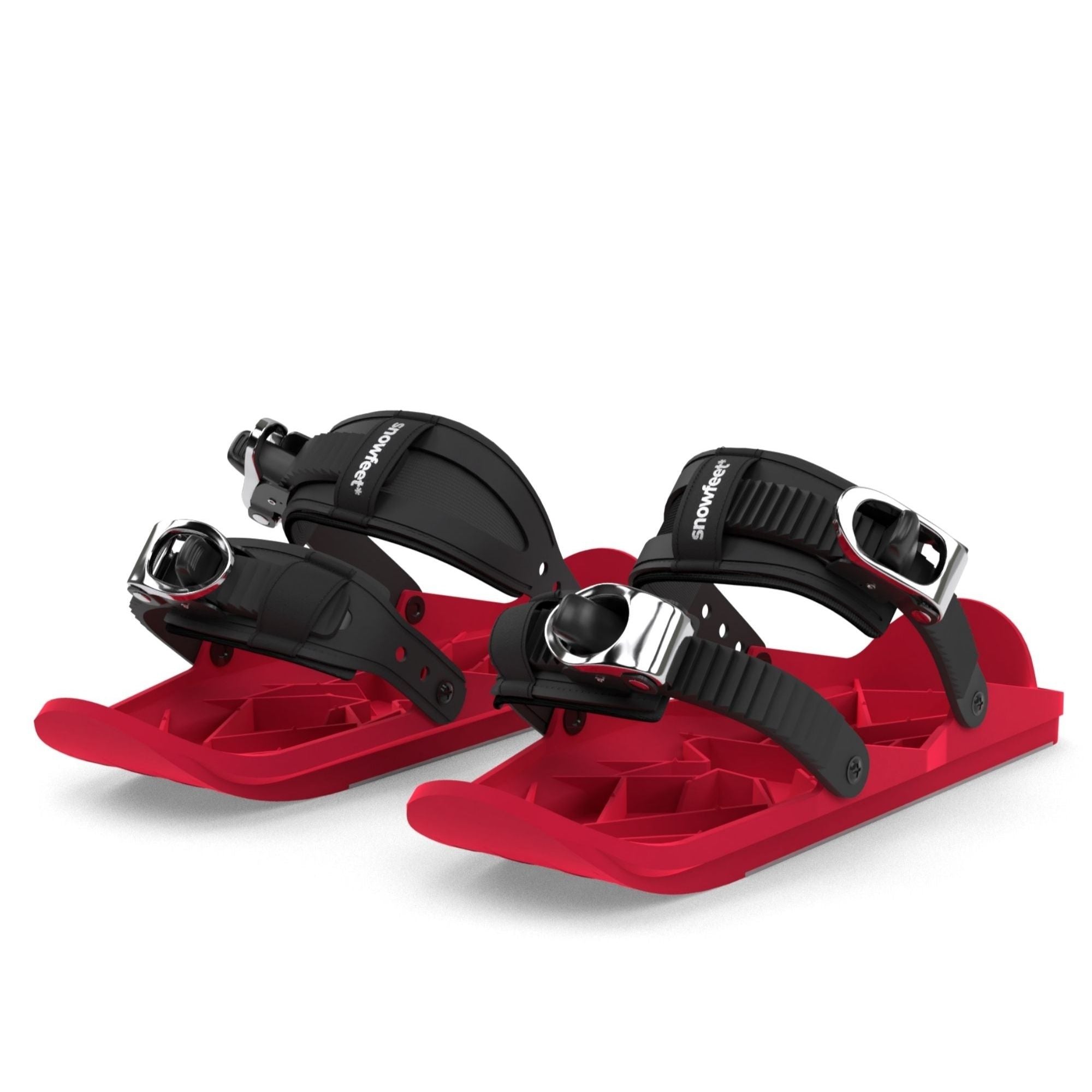



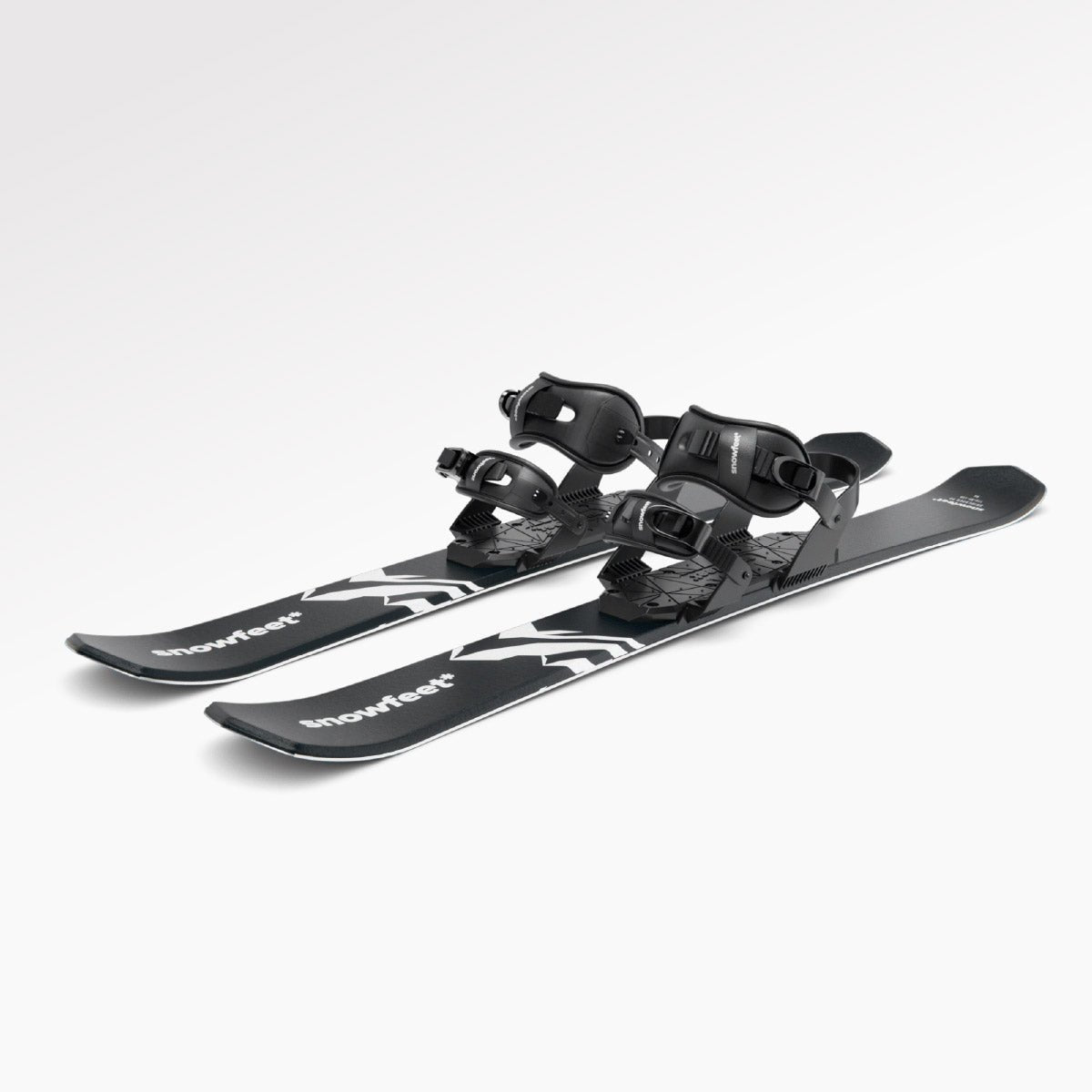
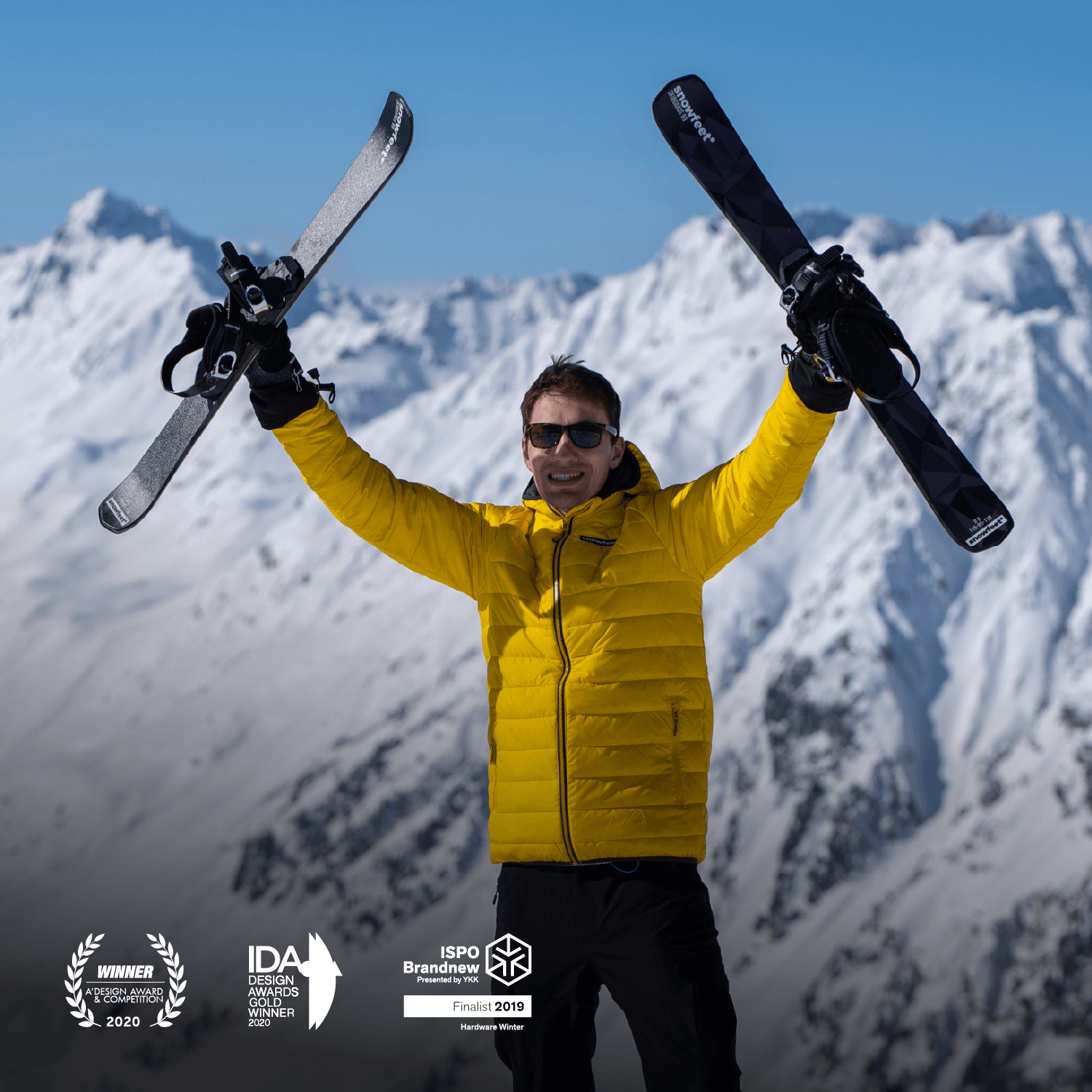
Laisser un commentaire
Ce site est protégé par hCaptcha, et la Politique de confidentialité et les Conditions de service de hCaptcha s’appliquent.